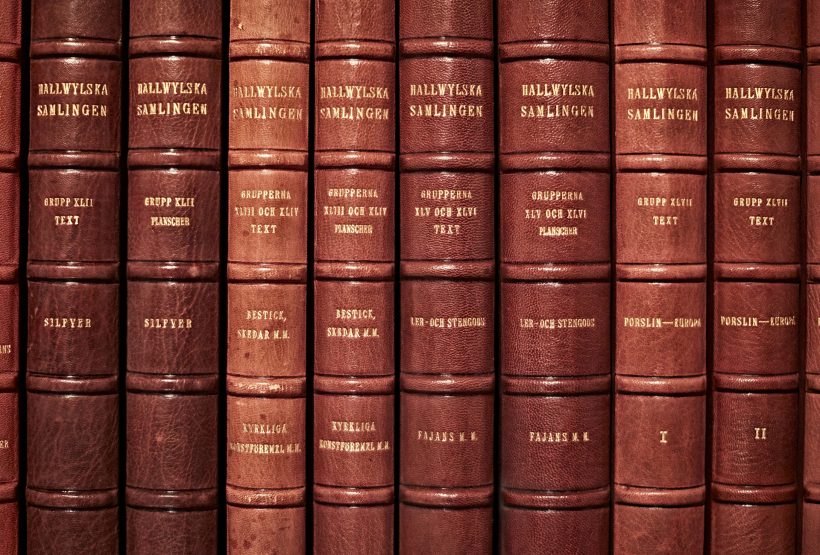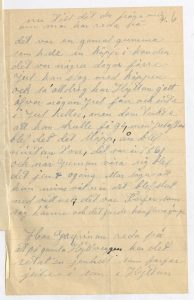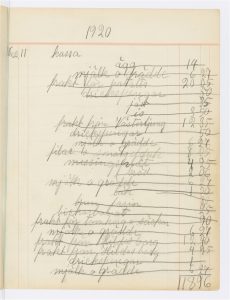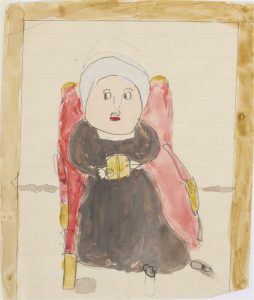
What is Gr LXIV, is a question I hear a lot. It’s Group 64, obviously. Anybody who has ever worked at the Hallwyl Museum knows that.
Wilhelmina von Hallwyl decided that the collections of objects in the museum should be documented groupwise, each group with its own Roman number. Group I is the house at Hamngatan 4, group II are the inventories of the office, group III means the inventories of the kitchen and the wine cellar, and so on. Every object in the house has been documented in and images. There are, altogether, 67 groups which are described in 78 folio sized volumes.
Gr LXIV is a heterogenous group. It contains the archives of Hallwyl House; the private archives of Walther and Wilhelmina von Hallwyl, the company archive, the archive for the house itself and the archive for Schloss Hallwil in Switzerland. There are documents of all sizes, lose or bound into books, handwritten, or printed.


The idea is that all these documents should be available in digital form in the future. The advantages of a total digitization are clear. Imagine, for instance, that we could link all letters from individuals to existing archive records in city archives and the National Archive. If we could get an overview of all the financial transactions taking place in the household and the family company and see what resources that were actually there, instead of speaking vaguely about “one of the riches families in the country”. We know from experience that every look into the archives gives us new information and increased understanding of the time and the people.

Wilhelmina’s granddaughter Margit made a drawing of her grandmother.
The tricky bit is that we are not sure exactly how many documents we are talking about, and therefore we cannot estimate how long it will take to digitize it all. We have a very competent project group, which includes a conservator and several curators. But we have only one person doing the scanning… He has captured more than 20,000 images in three years. Who is he? His name is Azad. What does he do and how does he do it? He will tell you in his own words:
I digitize between 200 and 500 pages per day. I scan about 95% of the material, and photograph the rest.
Most of the documents are mounted in binders, that can not be opened to 180 degrees. We solve the problem by using a V Mode Scanner (Bookeye 4) with a V shaped glass plate. A special scanner of good quality. The material is 100 years old, or more, so it is very delicate. This means that the digitization takes longer than it would with newer material. All documents have different sizes and I need to put a white sheet of paper as background. I also have to be careful not to damage the paper.
The second phase of the job is the cataloguing. All digitized objects must be ordered and recorded in a database, where you describe the material, the qualities, and the history. The records need to be numbered and connected to the physical material. A small mistake will send the material to the wrong place, so we double and triple check the digital images against the physical documents.
The hardest part is to establish the owner/user of the document. The name only is not enough. You need to find the name in the database, or create a new record of the right person.
We archive the files according to ISO standard PDF/A, which is good for archiving and long time storage of digital documents.
/Azad Karimi

Dagsaktuell annons för skrivmaskiner.